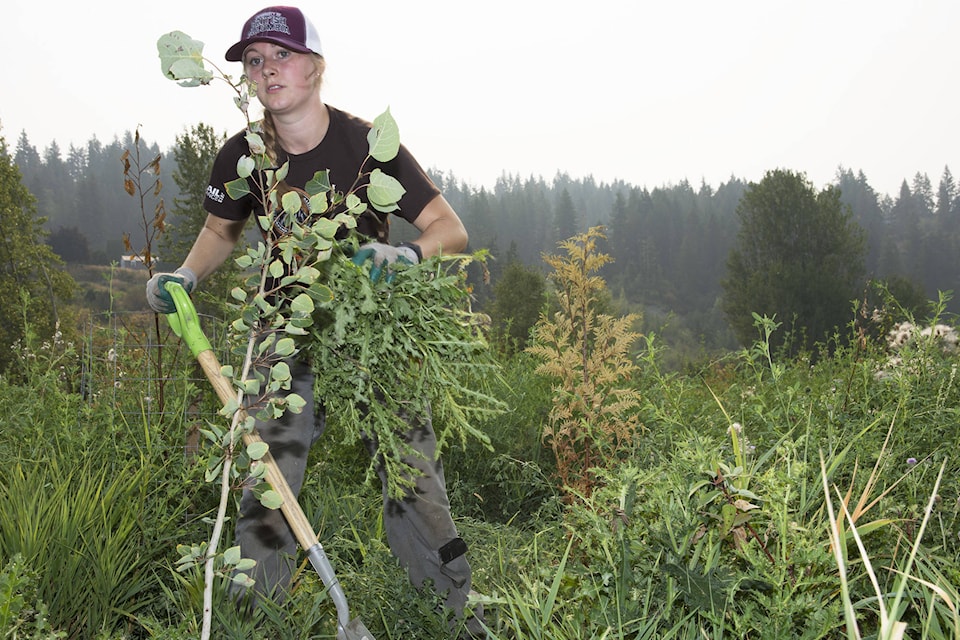Volunteers were unwilling to let all the hard work that has gone into building the habitat-promoting hummocks along the foreshore trail be spoiled by the recent dry conditions.
Approximately 15 volunteers showed up for a weeding and watering bee organized by the Salmon Arm Bay Nature Enhancement Society (SABNES) on Saturday, Aug. 12.
The hummocks, knobs of earth which reach above the reeds near the foreshore trail, were planted with a variety of vegetation in the spring that make it easier for birds, turtles and other animals to make the area their home. The vegetation is at risk of dying due to lack of water or being choked out by weeds.
���߲��о����Back in April we had about 300 school kids, Grades 2 to 12, plant these hummocks with native species ���߲��о���� 15 species,���߲��о���� said Kim Fulton, who has played a major part in organizing the project.
Fulton said the heavy rains in the spring gave the plants a good start to their growth, but they also lost plants due to erosion.
���߲��о����We���߲��о����re watering the plants to get them them through this drought and I think by fall they���߲��о����ll be fine and next spring they���߲��о����ll really take off and it will create the diversity we want to provide habitat for a whole range of different critters.���߲��о����
Fulton said the plants on the hummocks were specifically selected for their benefits for bird nesting and to provide food sources.
Along with watering the plants, volunteers pulled weeds that were competing with them for water, light and nutrients.
Some of the volunteers included members of the Columbia-Shuswap Invasive Species Society (CSIS).
Emily Spiler of CSIS said it is important to pull weeds from the area because if native plant species do not have the correct conditions to thrive, invasive species are more easily able to out-compete them and take over an area, decreasing biodiversity.
Fulton said the hummocks already showed signs of use, including deer and bird tracks and the carcasses of fish where raptors had dropped them.
He said the weeding and watering effort was a good team-effort between the CSIS, The Shuswap Trail Alliance, SABNES and the Salmon Arm Naturalists.


